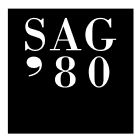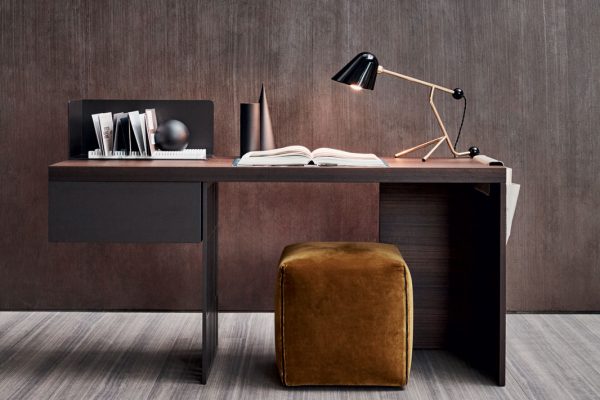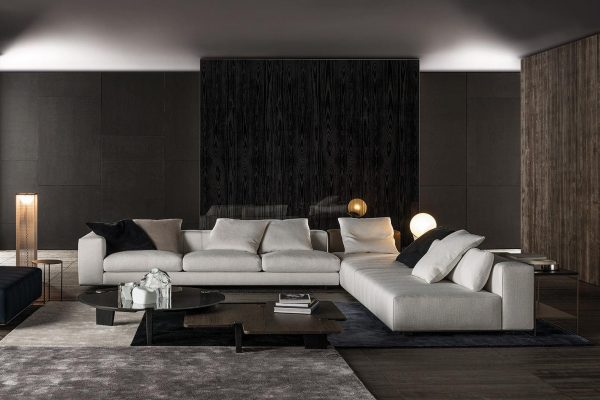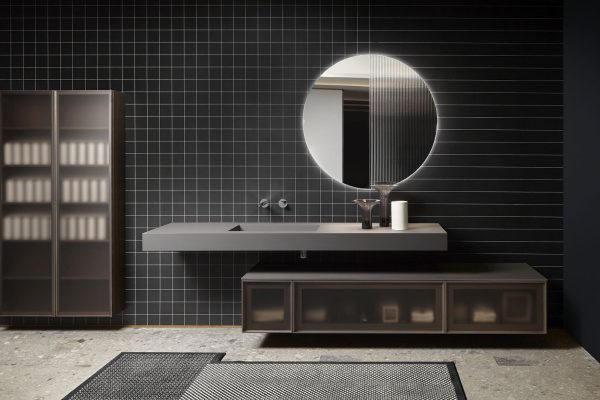UniFor, the tailor-made design for offices
Flexibility, comfort, safety and environmental quality, understood as physical and mental well-being, together with the consistent and non-invasive use of technology, are the dominant features of the design research of UniFor, Italian excellence in office design, part of the Molteni Group, which places the person and the work environment in which they operate at the center of its study.
A company that was founded in 1969 after Angelo Molteni took over the Casaluci Rovellasca company and, in 1974, acquired its current name under the leadership of Piero Molteni, Angelo’s second son. His is a specific vocation, carrying the artisan tradition of Brianza, born of the close relationship between industry and author, toward a global direction of organic and coordinated arrangement of public and private spaces with their own identity.
From its origins UniFor presents itself as a factory-laboratory available to the best creative talents. Specialization in major projects, international vocation and close working relationship with the most prestigious architectural firms characterize its activity. All this makes the company’s proposals innovative in terms of form and technology in addition to its ability to respond to the complexity of contemporary workspaces with a wide range of furniture and partition systems geared toward refined simplification.
Thanks to these UniFor peculiarities, as early as 1975, when IBM America ordered 1,300 Modulo3 desks for its headquarters offices in Mount Pleasant, New York, furnishes and designs the spaces of prestigious environments such as: the Musée du Quai Branly in Paris, designed by Jean Nouvel, the Renzo Piano Building Workshop for the New York Times headquarters, the Paris offices of the Louis Vuitton International, the furnishings of the Milan headquarters of the Hearst Magazines, of the Philarmonie de Paris designed by Jean Nouvel, the new Parliament in Malta, the new headquarters of the maison Balenciaga in Hôpital Laennec in Paris, the Qatar National Library in Doha, and Oodi, the Central Library in Helsinki.
Satellites, revolutionary, state-of-the-art desks
It was 1986 when UniFor developed Satellites s180, a precursor product to advanced operating systems, with adjustable-height swivel worktops designed to accommodate computers and electronic equipment.
The s50 and s1000 models will then be offered over the years until, in 2018, the s200 model. A workstation that consists of single and multiple workstations designed for ever-changing spaces where differentiated ways of working coexist. The rectangular top, available in various sizes, can be fixed or height adjustable, either manually or electrically. The great flexibility of the construction system allows configurations to be changed at any time, adapting them to functional needs: single desks can become multiple desks and vice versa, and fixed-height workstations can also be transformed, by integrating electrical adjustment devices, to variable height.
Touch Down Unit, the station designed for hybrid spaces
Simple and compact form for the Touch Down Unit, the system originally created for advanced work environments. It is an autonomous mobile workstation that provides different finishes and equipment that allow it to fit into any professional, domestic and all nomadic living scenarios such as airports, hotels and large public areas. Characterized by an essential design with a contemporary sign, it is presented as a rectangular work surface superimposed on a closed volume that, in the mode of use, opens articulating into two containers equipped with different elements to complement and support the workstation. The work surface, with its vertical adjustment and horizontal translation device, makes it ergonomic and comfortable to use in any position, whether sitting or standing. Also available in an electrified version, with an electrical outlet and USB ports for charging electronic devices.
Secretello, where past and contemporary coexist
Secretello, which bears the signature of Michele De Lucchi, reinterprets the theme of the secrétaire associated with the showcase in a contemporary way. The designer, thus suggests an original interpretation of the contemporary office space. Designed for expanded use in home and study environments as well, this workstation features elegant construction solutions and fine finishes. The desk consists of a solid natural oak frame that incorporates a glass plate in the transparent parts. It is a refined industrial design project that defines a space at once personal and public, in which to store tools and working objects, documents, books, but also memories.
Less Less Color, the elegance of the contemporary office
“Reintroducing color, particularly in the office, means making it possible for variety, relaxation, appropriation of space, singularity, being comfortable, in short, it’s more fun.”
Word of the architect Jean Nouvel, who signed Less Less Color, this elegant and sophisticated vision of the contemporary office, in which the various elements of the series are combined with great compositional freedom, even in terms of color.
With its formal cleanliness and freshness, it is the ideal solution for executive environments, where sobriety, elegance and creative freedom are key components of the work space. Eight colors are added to the traditional Less Less range. The tables, which are available in different sizes, square, rectangular or L-shaped, are qualified by the unique table top, which integrates into the surface the Forbo linoleum insert made in the same color as the aluminum frame.
Complementing this are the grommet flap, cable-hoist-ready leg, and cable collection basket, all of which help conceal an ever-present, never-exposed technology.



